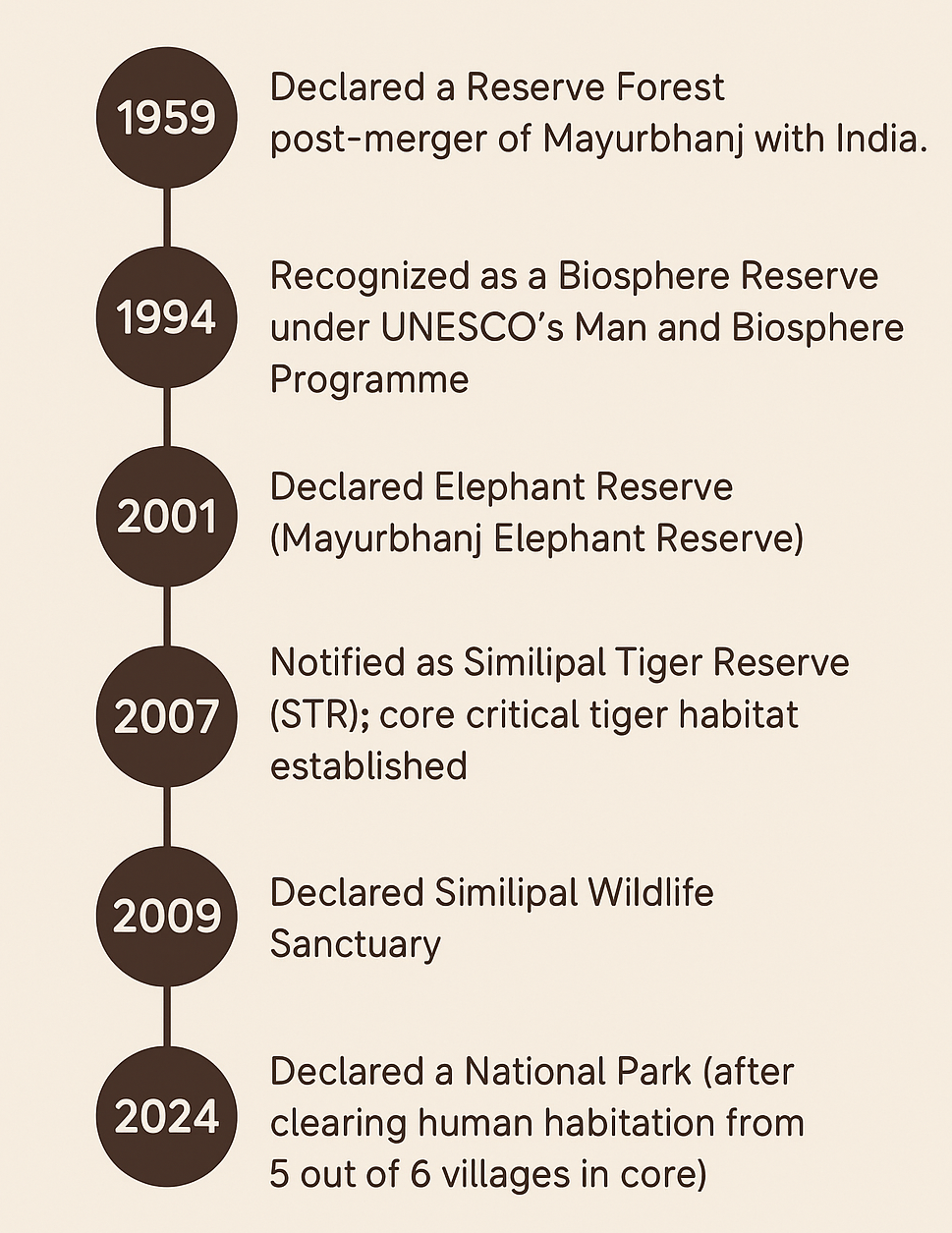Syllabus: GS3: Conservation, environmental pollution and degradation, environmental impact assessment.
About Simlipal National Park
- Similipal, located in Mayurbhanj district, is the 107th national park of India. It is also the second national park of Odisha after Bhitarkanika.
- It spans 845.70 square kilometers and is currently the largest national park in Odisha.
- The decision was conveyed by the Odisha government after decades of planning initiated in 1980.
- It is a landmark in wildlife conservation and enhances ecological conservation.
- Meets the requirements for central government national park status—areas are virgin and uninhabited by humans.
- Similipal is a major part of the Similipal Tiger Reserve, which is one of the significant tiger habitats in India.

Historical Timeline of Similipal

Vegetation:
- Dominated by Sal forests, moist deciduous, and semi-evergreen forests.
- Home to 1,352+ plant species including 94 species of orchids, 7% of India’s flowering plants, and 8% of its orchids.
Wildlife:
- 40 Royal Bengal Tigers including the world’s only wild melanistic (pseudo-melanistic) tigers.
- Hosts 25% of Odisha’s elephants.
- 361 species of birds, 62 reptiles, 21 amphibians.
- Other animals: Leopards, sambar deer, mugger crocodiles.
Notable Locations within Similipal
- Waterfalls: Barehipani and Joranda.
- Peaks: Khairiburu (1,178 m) and Meghasani (1,158 m).
- Biosphere Reserve: Spans over 2,750 sq km, including 2,306 sq km wildlife sanctuary.
Human Settlement & Tribal Communities
- Core area had 6 villages; 5 relocated over time.
- Bakua village (61 families) was not relocated—hence, left out of the national park zone.
- Lodha tribe, a Particularly Vulnerable Tribal Group (PVTG), lives in the region.
Additional Facts
- The national park area is carved mostly from Similipal South Division.
- Bhitarkanika, the only national park before this, was declared in 1998, famous for its mangrove ecosystem and estuarine crocodiles.
Source:- Indian express









